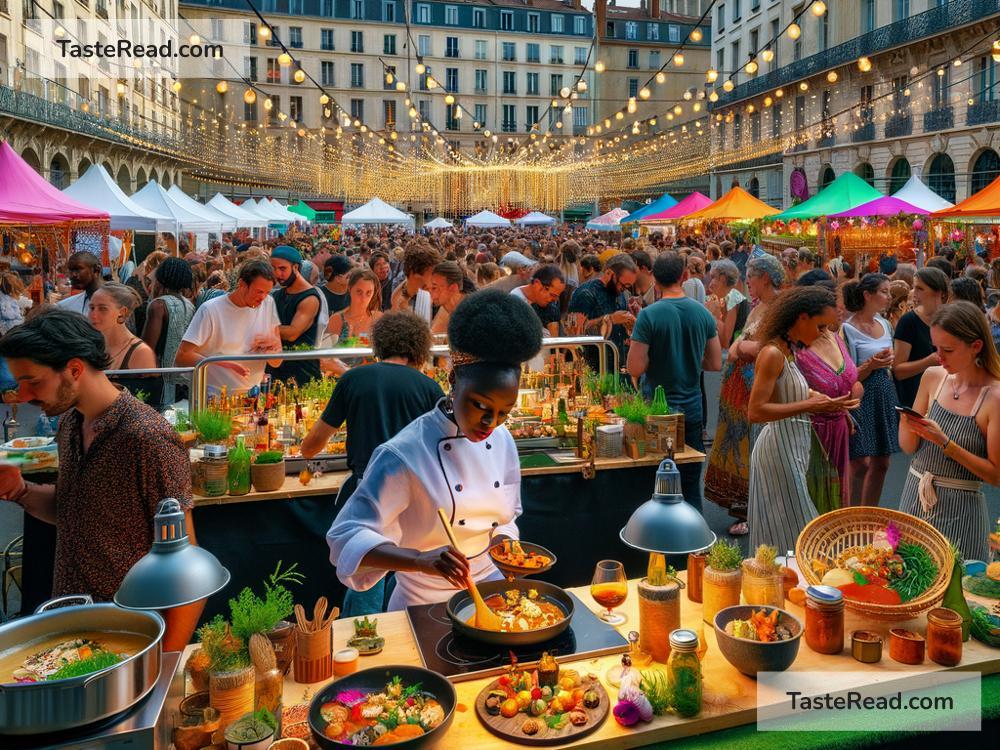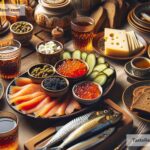Discovering the Multi-Sensory Performances of Food Artists at Festival Gastronomique in Lyon, France
Lyon, France, is often called the “capital of gastronomy.” Known for its rich culinary history, bustling markets, talented chefs, and mouthwatering recipes, the city is a paradise for food lovers. Every year, Lyon’s food culture reaches new heights during the Festival Gastronomique, an event where traditional and modern food collide in a spectacular celebration. Among the many attractions at this festival, one of the most exciting trends is the work of food artists, who create multi-sensory performances that delight all the senses. In this blog post, we’ll explore what food artistry is, why it’s becoming so popular, and how these creative experiences are changing the way we enjoy food.
What is Multi-Sensory Food Art?
Multi-sensory food art goes beyond cooking delicious dishes—it uses food to create an immersive experience for taste, smell, sight, touch, and even sound. Food artists combine culinary skills, visual creativity, storytelling, and innovative techniques to engage their audience in a unique performance. At Festival Gastronomique, these artists are not just chefs; they are inventors and performers who push the boundaries of traditional cooking.
Imagine tasting a dessert while listening to soothing music, or watching edible flowers float on an aromatic mist before you take your first bite. Picture a beautifully plated dish that glows under special lighting, or touching a warm, textured piece of chocolate before its rich flavors melt in your mouth. These experiences are far more than just eating—they’re moments that create lasting memories.
Food Artistry at Festival Gastronomique
The Festival Gastronomique in Lyon is the perfect stage for food artistry. The event attracts some of the best chefs, food experts, and artists from around the world. Throughout the festival, various performances and displays showcase how food can be turned into art.
Visitors are welcomed into colorful spaces filled with music, lights, and scents that complement the dishes being served. Instead of simply bringing food to a plate, artists work to create environments where food tells a story. Some performances include interactive elements, where guests are invited to play a role in the food experience—whether it’s designing their own dish or picking ingredients directly from an installation.
One of the standout performances at last year’s festival featured a futuristic “food concert,” where a group of artists created sounds from their cooking process. The chopping of vegetables, sizzling of sauces, and bubbling of liquids were amplified and turned into a rhythmic soundtrack. Guests who attended the performance enjoyed tasting dishes that were styled to match the musical beats.
A Fusion of Tradition and Innovation
Food artistry often combines old traditions with cutting-edge innovation. Many multi-sensory performances at Festival Gastronomique use classic dishes but reinterpret them in bold new ways. Some artists showcase beloved Lyonnais recipes like quiches, charcuterie platters, or decadent crème brûlée in highly imaginative presentations. One artist displayed a traditional baked tart suspended in mid-air using transparent strings, while another featured soup served in small glass bubbles that burst with flavor on contact.
Alongside traditional dishes, some performances focus on experimental trends such as molecular gastronomy. Ingredients are frozen, deconstructed, or reshaped into unexpected forms. For example, one artist created a sphere of frozen wine that melted in your mouth, releasing layers of flavor over several seconds. These inventive techniques show how modern technology can elevate familiar tastes into brand-new experiences.
Why is Food Art Popular?
Food artistry is growing in popularity for several reasons. First, it appeals to people’s curiosity. Tasting an unusual dish served in an unexpected way is exciting—it sparks conversation and creates unforgettable moments. Second, food artistry reflects the cultural shift toward experiences. In today’s fast-paced world, people value events that engage all the senses and bring them closer to art, music, and storytelling.
The multi-sensory performances at festivals like Lyon’s allow food lovers to explore the magical side of cuisine. Instead of just filling their stomachs, participants enjoy meaningful experiences that leave them inspired. Through vibrant colors, aromas, textures, sounds, and flavors, food artists show that cooking is much more than a skill—it’s a form of creative expression.
Tips for Exploring Food Art
If you ever get the chance to attend Festival Gastronomique, here are some tips to make the most of your experience:
- Keep an open mind: Multi-sensory food art is sometimes surprising, challenging, or even strange. Embrace the unexpected and take a chance on new tastes and techniques.
- Engage with the artists: Many food artists share the stories behind their creations, so don’t be shy to ask questions or learn more about their craft.
- Use all your senses: Take time to smell the aromas, admire the presentation, and enjoy the sounds and textures of the food. Let the entire experience unfold naturally.
- Capture the moment: Bring a camera to document the unique performances, but don’t forget to fully immerse yourself in the experience.
Conclusion
At the Festival Gastronomique in Lyon, food artistry transforms eating into a multi-sensory adventure. These performances remind us that food isn’t just for nourishment—it’s also a powerful way to express creativity and emotion. Whether you’re tasting classic dishes reimagined in dazzling presentations or witnessing experimental creations, food art encourages us to appreciate cuisine in new, exciting ways. If you’re passionate about food and art, this festival is a must-visit destination and a magical journey through taste, sound, sight, smell, and touch.


